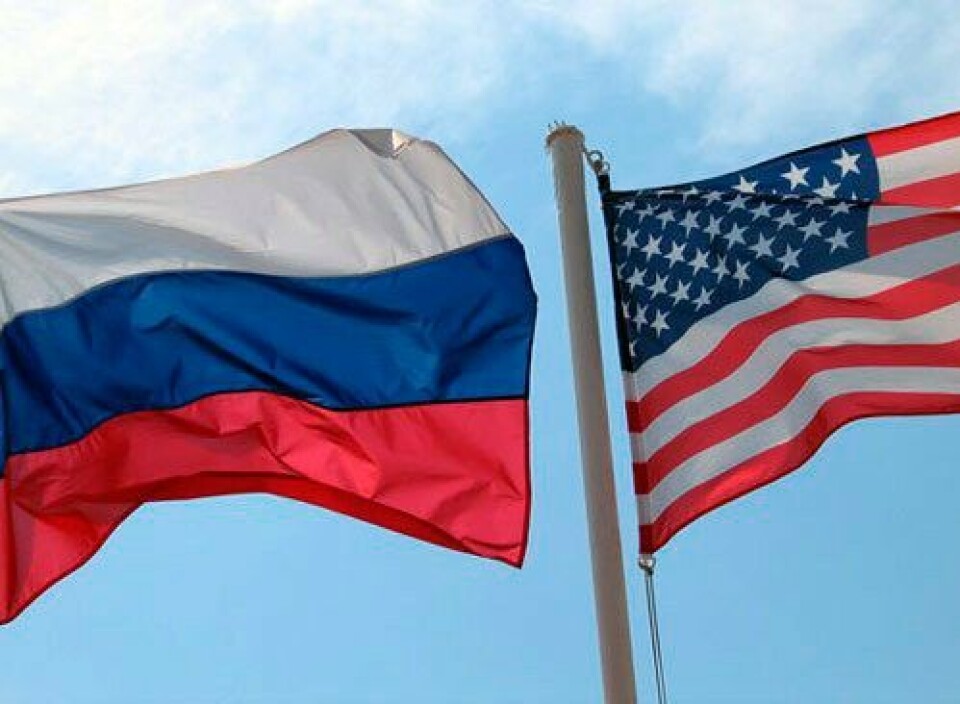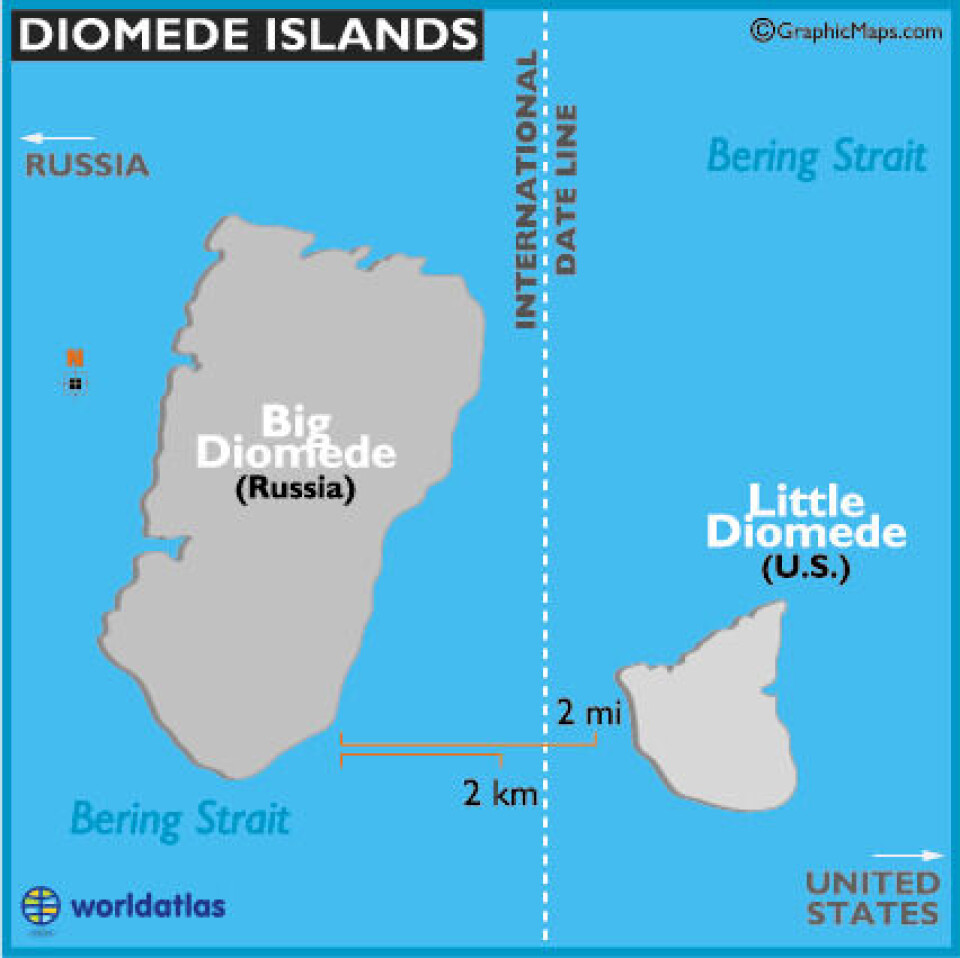
Arctic remains refuge of friendly US-Russia relations
In 1987, in the glow of glasnost, then-Soviet President Mikhail Gorbachev detailed his vision of an Arctic that would be a “zone of peace” where nations cooperate to protect the environment and promote sustainable development.
Scientists, indigenous people and others working on the ground to protect resources and improve life on both sides of the Bering Strait are determined to maintain that zone of peace in the Arctic, despite deep geopolitical divides over what the governments of the United States and other nations consider to be Russia’s belligerent policies elsewhere in the world.
Such cooperation was on display last week in Fairbanks, where scientists and policymakers gathered for a high-level meeting of the eight-nation Arctic Council and other Arctic-related events.
It was “a pleasure to see” collaboration between the Russian delegation and those of the council’s other seven Arctic nations, said David Balton, deputy assistant secretary with the U.S. Department of State who chairs the council’s panel of Senior Arctic Officials.
“It’s no secret that the United States and Russia have significant conflicts about other parts of the world and other issues — not just the United States and Russia but virtually all of the other members of the Arctic Council and Russia,” Balton said at a news conference at the University of Alaska Fairbanks, site of the Arctic Council meeting. “But in the Arctic in general and in the Arctic Council in particular, we remain able to cooperate with one another. We actually need each other to make progress on the Arctic issues.”
Sharing Arctic science
One specific Arctic Council project — establishment of a more robust and open international system for sharing Arctic science — is being led by both the U.S. and Russian delegations, and is an example of such cooperation, Balton noted.
Friendship and mutual interests were also themes at the annual Arctic Science Summit Week, the biannualArctic Observing Summit and related events held simultaneously at UAF. Those meeting attracted about 30 participants from Russia, a conference spokeswoman said.
One day-long meeting focused on emergency preparedness and response in remote regions, with in-depth case studies of two villages struck by parallel flood disasters in the spring of 2013 — the Yukon River village of Galena in Alaska and Edeytsy on the Lena River in Russia’s Sakha Republic.
Another pair of sessions allowed residents of Alaska and Chukotka to compare notes on how to manage large congregations of walruses gathering on coastlines. The gatherings of tens of thousands of walruses aregetting bigger and becoming more frequent as floating Arctic sea ice diminishes in the late summer and falland the adult females and their young crowd on shorelines instead of ice floes to rest between food-foraging sessions in the Chukchi Sea.
Just as there is a formal U.S.-Russia management partnership for polar bears, there perhaps should be one established for management of walruses, some meeting participants said.
The Alaska & Chukotka relationship
Elsewhere, in a conference poster session, researchers from Russia provided information on other issues of mutual concern. They submitted findings about such diverse topics as new ways scientists in Alaska and Russia could monitor air pollution in Arctic and subarctic regions; improved understanding of rapidly shifting wildlife populations in the Sakha Republic through better satellite tracking and more involvement by local hunters; and fatigue and risks to well-being of workers pulling long shifts at remote oil-field camps in the Nenets autonomous region.
With increased tensions at higher levels of government over Ukraine, Syria and other world hotspots, the partnership between Alaska and the Arctic region of Chukotka, the closest Russian district, can be something of a friendly refuge, some conference participants said.
That partnership, based on common culture, shared natural resources and, in some cases, family ties, goes way back, noted Vladimir Etylin, a former legislator from Chukotka and a leader of the Chukotka Association of Traditional Marine Mammal Hunters. “It’s the history. It’s not made up,” he said.
Though not as old as the cultural ties, several long-term joint U.S.-Russia research projects endure. Many, such as the Russian-American Long-term Census of the Arctic, focus on the Chukchi Sea specifically, tracking decades-long patterns of bottom-dwelling fish and zooplankton, establishing knowledge about biodiversity and identifying sources of methane in sea sediments, among other subjects.
Still, even in the friendly territory of the remote Arctic there are some ripple effects of international hostilities.

Tensions with Russia
The consensus-focused Arctic Council had a brush with geopolitical tension in 2014, when the Canadian government boycotted a Moscow meeting to protest Russian actions in Ukraine.
Within Russia, nongovernmental organizations that are important sources of funding for joint research and on-the-ground projects have been hobbled by international disputes and new and hostile government policies, said Martin Robards, Arctic Beringia coordinator for the Wildlife Conservation Society.
“I think the geopolitical tensions make it harder for large organizations to invest large amounts of money in Russia,” Robards said.
He cited the MacArthur Foundation, which closed its Moscow office last year. At the time, the foundation’s president cited new legislation that allowed NGOs to be targeted as “undesirable” foreign agents, which she said has made it “all but impossible for international foundations to operate effectively and support worthy civil society organizations in that country.”
U.S. government agencies are also less likely to fund projects in Russia at a time of deteriorated relations, conference participants said.
A previously scheduled Alaska-Russia conference on natural-disaster hazards that was to have been held in 2014, for example, was canceled when the State Department pulled funding after Russia annexed Crimea.
Similar funding problems have emerged at agencies like the U.S. Fish and Wildlife Service and the U.S. Geological Survey, which manage and study Arctic wildlife, participants said.
The ripple effect
In Chuktoka, the tensions have had an intimidating effect, causing some people to delay or shelve their ambitions for partnerships with their Alaska neighbors, said Eduard Zdor, a Chukotka Native who crossed the Bering Strait to enroll in a graduate program in anthropology at UAF.
While there has been no obvious interference by authorities, and while “everything is OK” between Alaska and Chukotka Natives and between Alaska and Chukotka scientists, there is a fear in the atmosphere that chills exchanges, said Zdor, also a member of the Chukotka Association of Traditional Marine Mammal Hunters.
“It’s just a personal decision: ‘I don’t want to do research with Alaska,’ ” Zdor said. “Nothing official, nothing formal.”
Not all problems in Chukotka stemming from high-level government policies are linked to a cooler U.S.-Russian relationship.
One example was a surprise influx of visitors at Vankarem, a Chukotka village that is a major gathering site for beached walruses, said Elisabeth Kruger, Arctic and Bering Sea program officer for the World Wildlife Fund.
Walrus protection
Local residents have been working hard to protect the walruses and to prevent panicked and deadly stampedes, Kruger said. They have rules to keep the area quiet and calm, extending even to a prohibition on bright colors near the area, she said.
But a couple of years ago, the local walrus protectors woke up to find a huge cruise ship anchored offshore, and a flotilla of rafts ferrying German tourists in for a close-up look at the walruses, all with permission from authorities in Moscow, Kruger said. “The village was not warned or consulted about the cruise ship coming there,” she said.
The Chukotka experience provides lessons for Alaska, where annual gatherings of tens of thousands of walruses have become annual events near the village of Point Lay. As in Chukotka, locals have been working to protect the animals there — and teaming with government officials to fend off sightseers and photographers who might cause disturbances if they get close to the walrus action.
That flow of walrus information, which includes advice to Alaskans from respected Chukotka experts like Anatoly Kochnev, is an example of why continued cooperation with Russia is needed on a regional level, at least, even if high-level relations have soured, said Margaret Williams, managing director of WWF’s Arctic program.
“We have so much in common, with our transboundary polar bears, our transboundary walrus and transboundary bowhead whales and transboundary families. There is really a great need to keep that going,” Williams said.
This story is posted on Independent Barents Observer as part of Eye on the Arctic, a collaborative partnership between public and private circumpolar media organizations.















